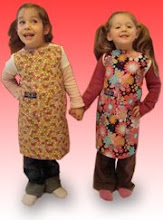So large in fact, that many of the neighborhoods other than falling within the GTA have absolutely nothing in common at all. You're probably wondering what that has to do with the price of rice in China - well I'm going to tell you why it's important to know your city, and to know what you don't know about it.
If you are in the juvenile market, and I am, great! There's young families everywhere, in every neighborhood, and they need stuff. Babies are a constant emerging market. Everytime you lose a few customers to age, they are immediately replaced. Good news so far, right?
But neighborhoods vary by economics, culture, sense of community, and sensibility. What flies in one affluent downtown neighborhood, may sit on the shelf for years in the 'burbs. And it brings out the next question: How will you differentiate and take into account all the micro markets in your city? The first and most simple differentiator is the price of the item itself. I have lately been awed by the new crop of high chairs on the market that are retro-modern in design, and can cost up to $1200.00. I love them. I love the look of them. I will not buy one. Simply put, it's out of my market range. And I already own a high chair, and have dreams of the day when it's no longer a fixture in our home. But I tell you the highchair story so I can also tell you where it's NOT for sale - low to low middle income earning neighborhoods. These manufacturers already know something you should know about yourself - they know they priced themselves out of huge pieces of the market segment. They know their product is niche and luxury. They know who their buyer is. And I would chance a guess that if I ever saw their marketing materials and business plans, they would pinpoint their buyer almost by name.
So ask yourself who your customer is. What do they earn? What are their priorities? How will they spend their money? Is your product a 'must have' or a 'nice to have' ? And what if it's simple things like colour and packaging that will sell you in one neighborhood, and not in another? The answer, if you can afford it, is to create a line. Now in my case, the line is 16 different patterns. Many thought I was nuts to start out with this many. But the one thing I knew was that one pattern and one colour do not fit all gender/tastes. And I already know from retailer feedback how WILDLY varied the sales numbers are depending on neighborhood.
The easy thing for me, is that my line is essentially all the same product, made of different patterns. They are all priced the same. You may want to consider a line with two or three price points so as to include yourself in various niche markets. For instance, my product will never be seen in a Walmart. It cannot be, and will not be ever profitable for me or anyone else to sell them through the consumer friendly but manufacturing ugly big box stores. But, if you are manufacturing zippers in China, and have the ability to get into a Walmart or Kmart, by all means have at it. But you will lose control of your company pretty quickly.
But lets get back to the idea of lines and neighbourhoods. There's an affluent area of Toronto where the Dads have their own butch diaper bags. They are super cool, and I love seeing them. There are other downtown areas where Dads are happy to tote their partners flower bespeckled diaper bag. As I said, depends on priorities. And I have my product in both types of neighborhoods, and they both buy the product. But differently. One neighborhood buys multiples of it, for when one is in the wash. The other buys them just one at a time, and to match an outfit, or to send to nursery school with their little one. The feedback is extremely important, because it tells me how to market further into individual neighborhoods. And focusses the forward direction. Many small manufacturers are pleased just to get their product in stores, and then tend to shy away from the resulting feedback, with good reason. They are afraid they will hear that the product isn't moving at all. And if they give the retailer the chance over the phone or in person, they fear they will be asked to repurchase their own merchandise. This happens. But rarely. Because retailers KNOW what they are doing when they buy your product. So follow up. Often.
Friday, March 28, 2008
Subscribe to:
Post Comments (Atom)


No comments:
Post a Comment